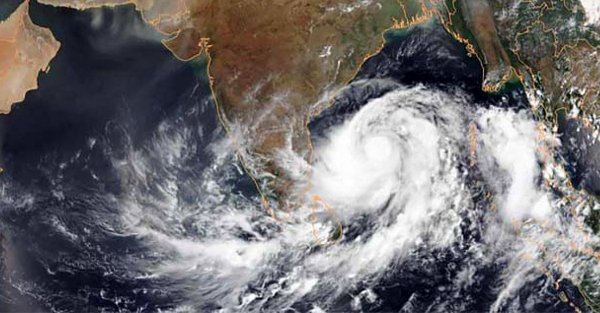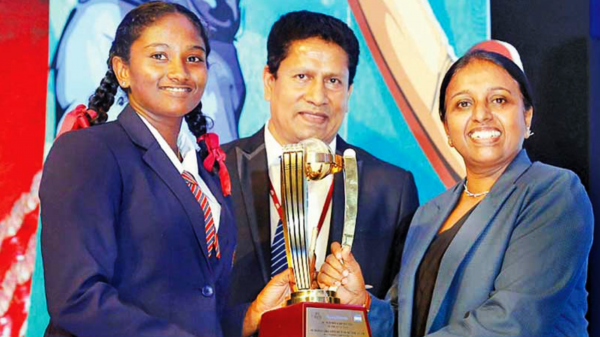
Local newspapers, in recent times, have been carrying a disturbing number of reports on child rape and sexual harassment.
Just today, (August 10) it was reported that two suspects were arrested for the alleged sexual abuse of at least nine young girls in Hanthana in the Kandy district.
The two suspects had allegedly conducted a six-month study camp for female students who were re-sitting the GCE Ordinary Level examination. The camp had given the students accommodation within the camp building in Kandy.
According to the police, the students had been sexually abused during their stay at the camp on several occasions. Four students who had escaped the camp on August 1 had lodged a complaint with the police.
The subsequent police investigation had revealed that the initial suspect had sexually abused at least nine girls at the study camp.
The arrest of a second suspect was made today, and while police investigations are ongoing, statistics received from the National Child Protection Authority of Sri Lanka (NCPA), show that 35 cases of rape and 75 cases of sexual harassment have been reported for the month of July alone. Of the total 799 child-abuse related complaints reported to the NCPA last month, the Colombo district tops the chart with a total of 116 complaints.
The reports on the Hanthana incident come a week after a more horrifying incident in Matara was brought to light ‒ the incident where a thirteen-year-old girl was raped several times over the course of many years.
A Lost Childhood
 Sandali’s story is only one among many cases of child sex abuse reported every month. Image credit: cdn.newsapi.com.au
Sandali’s story is only one among many cases of child sex abuse reported every month. Image credit: cdn.newsapi.com.au
On July 29, 2016, the arrest of a tourist hotel owner and five others who were involved in an underage rape case was reported in local media. Speaking to the police, it was understood that this was not just a one-time gang rape the child had experienced.
Sandali* was seven years old when her brother’s friend raped her one day, when her parents were not at home. She was often left in her brother’s care because her parents worked in an estate at Deranagala in Matara.
According to Sandali’s statement to the police, her parents knew nothing of what happened to her, and she didn’t tell them anything either, because she had been afraid of the consequences.
Going, when she was ten years old, a worker at a nearby factory befriended her and subsequently raped her. Not long afterwards, his colleagues also raped the young girl; the child was raped at least six or seven times by the factory workers.
The horror did not end there – after some time, the factory workers passed the girl on to a bus conductor who took her to a hotel in the Akuressa area. The bus conductor soon made a business out of her, passing her on from person to person and hotel to hotel. According to Sandali’s statement, the bus conductor would then drop her off at home in the evening, and threaten to kill her and her family if she were to tell anyone of her ordeal.
Sandali’s statement confirms that she had in fact also been also forced into gang rape situations.
Ongoing Investigations
 Like Sandali, many children are afraid to come forward and speak out about abuse – or have been threatened against doing so. Image credit: motherhoodinstyle.net
Like Sandali, many children are afraid to come forward and speak out about abuse – or have been threatened against doing so. Image credit: motherhoodinstyle.net
Speaking to Roar, IP Mahakumara of the Police Media Unit said that Sandali had one day escaped from the bus conductor and taken refuge at a temple at Pigeon Island (Paravi doopatha) in Matara.
“When she was sitting there a monk approached her and offered her refuge. She was then taken to a room at the back of the temple and raped again. The monk had then given her a wad of cash consisting of fifty rupee and one hundred rupee notes,” said IP Mahakumara.
On July 10, her parents heard several rumours about their child circulating in their area. They immediately confronted the child, which resulted in her running away.
Sandali’s mother filed a complaint with the Pitabeddara Police and she was later found on July 23 in Nittambuwa, where she had been seeking refuge at a friend’s home.
Police then began investigating into the matter, and sixteen individuals have been arrested thus far. The monk who has also been implicated has not yet been arrested, although the police have said that investigations are being carried out to apprehend the monk, too.
Sandali is currently at a state-run orphanage until the investigations are complete.
Disturbing Numbers
 Child abuse-related complaints received by the NCPA for the month of July 2016
Child abuse-related complaints received by the NCPA for the month of July 2016
Although Sandali’s story has been quite a shocker for the nation, what’s more distressing to note is that hers is just one of hundreds of child abuse cases reported every year in Sri Lanka.
Speaking to Roar, NCPA Chairperson Natasha Balendran said that in today’s world, it is very important for parents to keep an open line of communication between themselves and their children.
“International studies have revealed that the root cause of sexual abuse in children is the unequal power relations between men and women, and adults and children,” she said, adding, “It is very important that parents communicate with their children. We must build up a society where children are safe and secure, and parents offer comfort and security rather than judgments and punishment.”
The number of child abuse-related complaints the NCPA has received from January to July in 2016 is 6,548 while the year 2015 showed a total of 10,732.
Child Rape In Sri Lanka
Last year, two major underage rape cases received a lot of media attention, mostly because both girls were killed by their rapists. However, after the “hype” died down, little Seya Sadewmi and eighteen-year-old Vidya Sivaloganathan were reduced to simple statistics on a chart.
Although nobody likes to acknowledge the idea of a ‘rape culture’, it is something that presents itself not just in the West, but here in Sri Lanka as well. It is, essentially, the normalisation of sexual violence ‒ something it’s high time we prevented from taking root.
The age of consent in Sri Lanka is sixteen ‒ this means that children below the age of sixteen are not considered able to give consent, thus, a person engaging in sexual relations with someone aged sixteen or under is recognised as having committed statutory rape.
According to actnowsrilanka.org, an organisation dedicated to educating the masses on violence against women and gender-based violence, the punishment for rape is rigorous imprisonment of at least seven years, which may extend to a maximum of twenty years with a fine.
“It is very important that we have strong criminal laws against child abuse that are effectively and expediently implemented so that there is an effective deterrence against the committing of such offences and the public have confidence that justice will be served whenever a criminal abuse is reported,” Balendran said.
According to Balendran, children who are in danger can complain to 1929, a 24-hour online help centre for children.
Awareness Vs. Action
 Every month, new incidents of child abuse are reported, and sexual abuse is always among the numbers. Image credit: hd.ibtimes.co.uk
Every month, new incidents of child abuse are reported, and sexual abuse is always among the numbers. Image credit: hd.ibtimes.co.uk
The NCPA also says it is currently working on several different fronts to combat the growing threat to children posed by the improper use of the internet and mobile devices to harass and bully children both sexually and otherwise.
“Our latest action in this regard is to launch a 24-hour confidential telephone line, which is separate from our 1929 line, for children and young persons who are being bullied, harassed, or intimidated online or via a mobile device,” she said.
At the same time she also said that, “A child can complain to us via phone, SMS, WhatsApp, Viber and IMO on 077-3220032 or 071-3220046. They may also use any other social media platform such as Facebook, Twitter, Instagram or Snapchat.” However, she added that the recently launched 24-hour service will only be conducted from July 22 to August 22.
While it is assuring to know that there are measures in place to encourage children to come forward and report incidents of sexual abuse, recent incidents beg the question: shouldn’t we be doing a lot more to protect children from sexual predators, and to ensure that perpetrators are adequately punished?
Savithri Wijesekera, Executive Director for Women in Need speaking to Roar, confirmed that there has in fact been an increase in reports of child rape in recent times.
“There is an increase in child rape. It is a combination of an actual increase in rape, and also more people willing to come forward as a result of awareness,” she said, adding that the authorities and the policy makers should realise that this is an issue that needs to be addressed immediately.
“In cases of child rape, the sad fact is that the cases drag on for long periods of time and after five or six years, the child is of marriageable age, and would not want to come forward. Thus, the perpetrators often walk free. This needs to change,” she said.
As Wijesekara said, child rape is a very serious crime against children and the future of the country. While laws should be tightened, the attitudes of the law enforcement and the media should also change in such a way that there is no re-victimisation. The increase of awareness is not enough. Action against the perpetrators, and action to prevent such incidents in the future should also be taken.
*Name changed to protect identity
Featured image courtesy kaurlife.org








